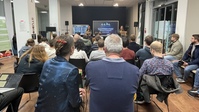 Night of Biosignals Night of BiosignalsOn November 7, the second “Nacht der Biosignale” took place, featuring exciting presentations on the topic of biosignals. Numerous visitors took advantage of the opportunity to attend in person or via livestream. Learn more |
 Awarding of the academic title Senior Professor at KIT Awarding of the academic title Senior Professor at KITWith the awarding of the academic title of Senior Professor at KIT, the KIT recognizes the long-standing commitment and high level of expertise of Professor Olaf Dössel. At the same time, KIT wishes to express its appreciation for outstanding retired professors. The title will be conferred for a three-year term beginning November 1, 2025. |
 New Courses at the IBT New Courses at the IBTStarting in the winter semester, new lectures will be offered at IBT within the study program Biomedical Engineering Master: - Trauma Science – Blood, Emergency Medicine, and Surgery |
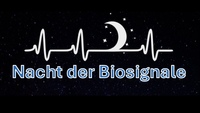 Night of Biosignals 2025 Night of Biosignals 2025On November 7, 2025, the Triangel invites you from 5–10 p.m. to the second “Nacht der Biosignale”, featuring exciting lectures and discussions. The event will be live-streamed and held across 14 locations. Learn more |
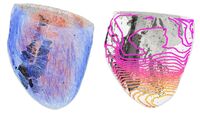 How Fibrosis Disrupts the Heart's Electrical Signals How Fibrosis Disrupts the Heart's Electrical SignalsInnovative imaging technique reveals hidden electrical connections in diseased hearts and provides new therapeutic approaches. Learn more |
 New Interdisciplinary Qualification course: “Practical Introduction to Research Software Engineering” New Interdisciplinary Qualification course: “Practical Introduction to Research Software Engineering”Starting in WS25/26, the Institute of Biomedical Engineering (IBT) will offer the new 2-day workshop “Practical Introduction to Research Software Engineering”. The course is worth 1 ECTS and is a hands-on introduction to the Unix shell, the version control system Git, and Python. More |
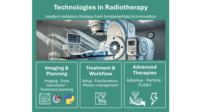 New Master Course “Technologies in Radiotherapy” New Master Course “Technologies in Radiotherapy”Starting in WS25/26, the Institute of Biomedical Engineering (IBT) will offer the new Master course Technologies in Radiotherapy. The course is worth 5 ECTS and combines lectures, excursions, and a hands-on group project. More information |
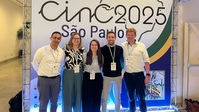 Computing in Cardiology 2025 Computing in Cardiology 2025From September 14–17, our team participated in the Computing in Cardiology (CinC) conference in São Paulo. Axel, Jonathan, Stephanie, and Silvia presented their latest research, contributing to the vibrant exchange of ideas that makes CinC such a unique event. It was an inspiring opportunity to connect with colleagues from around the globe, share knowledge, and spark new collaborations. We’re especially proud of Stephanie, who was recognized as a Young Investigator Award semi-finalist. |
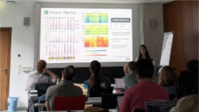 ENUMATH in Heidelberg ENUMATH in HeidelbergWe attended the European Conference on Numerical Mathematics and Advanced Applications in early September. Stephanie Appel presented a 2D benchmark for validating cardiac conduction properties, and Axel Loewe presented on mechano-electric feedback mechanisms. |
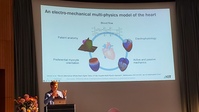 Cardiac Mechano-Electric Coupling (MEC) and Arrhythmias 2025 Cardiac Mechano-Electric Coupling (MEC) and Arrhythmias 2025From September 17 to 20, the 10th International Workshop on Cardiac Mechano-Electric Coupling and Arrhythmias place in Freiburg. Axel Loewe gave a presentation on the differential effects of mechano-electric feedback mechanisms in the whole-heart and Carola Kruthoff presented a poster about her master thesis. |
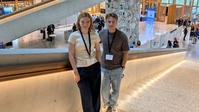 BMT 2025 in Basel BMT 2025 in BaselFrom September 9 to 11, the Tri-National Conference on Biomedical Engineering (BMT) took place in Basel. This event brought together scientists from all areas of medical technology. Carola Kruthoff gave a presentation on the effects of left bundle branch block in an electromechanical heart model and won the student competition, while Julian Mierisch presented a poster on his current research (influence of risk factors for postoperative atrial fibrillation). |
 Clinical consensus on the standardized regionalization of the atria Clinical consensus on the standardized regionalization of the atriaThis new paper presents a clinical consensus statement of the European Heart Rhythm Association and the European Association of Cardiovascular Imaging of the ESC on the standardized regionalization of the atria, with a significant contribution from CaMo IBT. More |
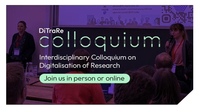 Leibniz-ScienceCampus – Digital Transformation of Research (DiTraRe) Leibniz-ScienceCampus – Digital Transformation of Research (DiTraRe)Join us for our next Colloquium about AI in biomedical engineering! With our special guest - Till Keller, Department of Cardiology and Angiology, Medical Center, University of Freiburg, Bad Krozingen - we will talk about Transformation of Medical Care and Research Based on Digitalisation - Health 4.0. Let's meet in person at the KIT Institute of Biomedical Engineering (IBT) and online on Zoom! |
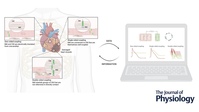 When cardiac cells communicate When cardiac cells communicateA new review article published in The Journal of Physiology explores how non-myocyte cells like fibroblasts and macrophages influence cardiac electrical activity through electrotonic coupling with cardiomyocytes. The study highlights the growing role of computational models in understanding these complex cell–cell interactions across scales, from single cells to the whole heart. This work provides a timely framework for future research into the electrophysiological impact of cardiac heterocellular coupling. More |
 New Research Associate at the IBT New Research Associate at the IBTJule Bender is working on cohort modeling of the human atria for in silico trials. More |
 New Research Associate at the IBT New Research Associate at the IBTCarola Kruthoff is working on the creation and validation of biomechanical twin modeling to unravel the hypertrophic phenotype. More |
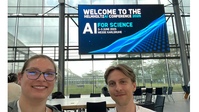 Helmholtz AI Conference 2025 Helmholtz AI Conference 2025Our group recently attended the Helmholtz AI Conference 2025 in Karlsruhe. It was a highly insightful event, emphasizing critical advancements in AI for science, including foundational models, agentic AI, and energy consumption. Silvia and Julian presented their research via posters (PSII-43 and PSII-46), sparking valuable discussions. This conference offered a crucial opportunity to engage with the AI community and gather new perspectives for our work. |
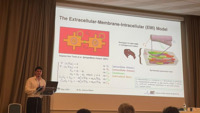 Coupled Problems Conference in Sardinia Coupled Problems Conference in SardiniaFrom 25 to 28 May, the Coupled Problems conference took place in Villasimius, Sardinia. Our institute was represented there by Joshua, who presented a convergence analysis of spatial discretisation for meshes with explicitly represented cardiac cells. The aim was to reduce simulation runtimes based on the Extracellular-Membrane-Intracellular (EMI) model by deliberately coarsening the mesh resolution – without compromising the significance of the results. More |
 91. DGK – Annual Conference 91. DGK – Annual ConferenceFrom April 23–26, the 91st Annual Meeting of the German Society of Cardiology (DGK) took place in Mannheim. Joshua and Silvia presented posters on their latest research (pacing frequency dependence of cardiac excitation conduction via fibroblasts and non-invasive atrial cardiomyopathy diagnosis), while Christian gave a talk on the automatic division of bi-atrial geometries. Pascal and Axel also attended, connecting with the cardiology research community. |
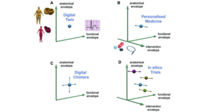 Advances and Challenges in Computational Modelling Advances and Challenges in Computational ModellingSince the turn of the millennium, computational modelling of biological systems has evolved remarkably. The article highlights recent achievements and new challenges, particularly in the cardiovascular system. It emphasizes the importance of mechanistic and data-driven models and their synergies to foster future progress in medical research and artificial intelligence. More |
 EHRA 2025 in Vienna EHRA 2025 in ViennaFrom March 30 to April 1, the annual meeting of the European Heart Rhythm Association (EHRA) took place, bringing together scientists, healthcare professionals, and key stakeholders from around the world involved in arrhythmia management. Axel Loewe and Silvia Becker represented the IBT at the event. Additionally, Silvia gave a presentation on why it matters how the P-wave is measured in the ECG. More |
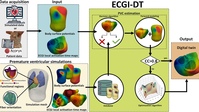 Advancing PVC Localization: A New Approach with ECGI and Digital Twins Advancing PVC Localization: A New Approach with ECGI and Digital TwinsAccurately identifying the origin of premature ventricular contractions (PVCs) is crucial for improving diagnosis and treatment. Read more about this innovative approach led by a collaborative research team, including contributions from CaMo IBT. More |
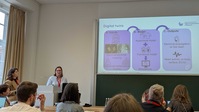 E-Science Days in Heidelberg E-Science Days in HeidelbergFrom March 12 to 14, the E-Science Days took place in Heidelberg with the theme “Research Data Management: Challenges in a Changing World.” Axel Loewe and Silvia Becker represented the IBT in the workshop “Information Infrastructures in the Era of Artificial Intelligence: Opportunities and Challenges,” organized by the Leibniz ScienceCampus DiTraRe. Additionally, Silvia Becker, together with Lea Singson from FIZ Karlsruhe, gave a presentation on the legal aspects of digital twins and synthetic ECGs. More |
 Supercomputers simulate patients' hearts with highly scalable algorithms Supercomputers simulate patients' hearts with highly scalable algorithmsNumerical simulation makes it possible to model very different processes, from the weather to nuclear fusion to individual body organs. This requires highly scalable algorithms that can be put together from a mathematical library like a construction kit. |
 New Insights on Sinoatrial Node Pacemaking Mechanisms New Insights on Sinoatrial Node Pacemaking MechanismsA new paper investigating the interactions between reduced extracellular calcium levels and sympathetic stimulation as a compensatory mechanism, potentially contributing to sudden cardiac death in chronic kidney disease patients, has been published in the Journal of Physiology. More |
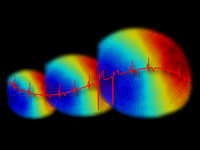 GRS/GRC 2025 in Barga GRS/GRC 2025 in BargaThe Gordon Research Seminar and on Cardiac Arrhythmia Mechanisms was held in Barga from February 22 to 27. It covered a wide range of topics, from atrial and ventricular mechanisms to micro- and ultrastructures of individual cardiac muscle cells. Christian, Moritz, and Axel (on behalf of Tobias) presented their work. More |
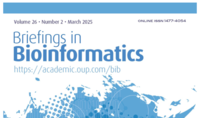 Credibility Assessment of Machine Learning Predictors Credibility Assessment of Machine Learning PredictorsOur recent publication "Consensus Statement on the Credibility Assessment of Machine Learning Predictors" in the journal Briefings in Bioinformatics aims to ensure the reliability and credibility of machine learning models used in clinical and biomedical contexts. Together with other leading experts, we outline a structured framework based on 12 foundational statements and propose rigorous guidelines for evaluating and enhancing the credibility of ML predictors, particularly when used in high-stakes healthcare decisions. More |
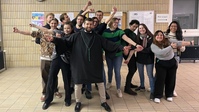 Successful Doctoral Defense: Dr.-Ing. Cristian Barrios Espinosa at KIT Successful Doctoral Defense: Dr.-Ing. Cristian Barrios Espinosa at KITDr.-Ing. Cristian Barrios Espinosa successfully defended his doctoral thesis at KIT, advancing Eikonal-based models to improve the accuracy and efficiency of cardiac electrophysiology simulations. More |
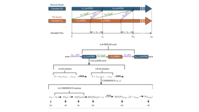 News of DREAM News of DREAMA new paper introduces the latest version of the DREAM for simulating cardiac arrhythmias. Published in Engineering with Computers, it provides an efficient approach to reentry simulations in cardiac electrophysiology. |

